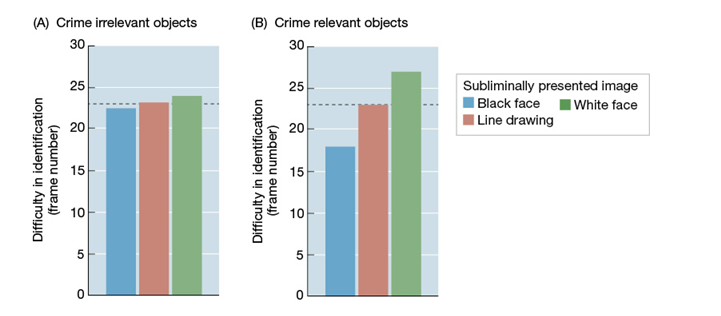Multiple Choice
Refer to the graphs below.

Researchers wanted to determine if ideas about race affect our visual perception. In an experiment, white college students were asked to look at a screen with images of objects that were either crime-relevant (e.g., a handgun) or crime-irrelevant (e.g., a book) . For each object, the first image was so blurry it was unrecognizable. The image became progressively clearer across 40 different frames until the students were able to correctly identify it.
Before they began the task, they were shown a photo for 50 milliseconds. The photo was of a black face, a white face, or an abstract line drawing. These "flashes" were subliminal images, meaning that the students were not aware of having seen them. Researchers wanted to find out whether seeing a black or white face, even without being aware of it, influenced the students' ability to identify the objects.
-Based on the data, it appears that
A) students identified crime-irrelevant objects much more quickly than they identified crime-relevant objects.
B) exposing students to a white face made it easier for them to identify crime-relevant objects.
C) students who had been exposed to an African American face identified crime-relevant objects more quickly than those shown an abstract drawing.
D) exposing students to faces had no impact on their ability to identify crime-relevant objects.
Correct Answer:

Verified
Correct Answer:
Verified
Q69: Explain John Locke's idea of the tabula
Q70: The followers of _ argue that there
Q71: A behaviorist is helping a special-needs child
Q72: A researcher presents his participant with a
Q73: _ taught at Wellesley College for more
Q75: Your uncle tells you about an interesting
Q76: The study of how physical events, such
Q77: The process whereby physical traits and behaviors
Q78: A research psychologist is most interested in
Q79: A Darwinist is likely to believe that<br>A)